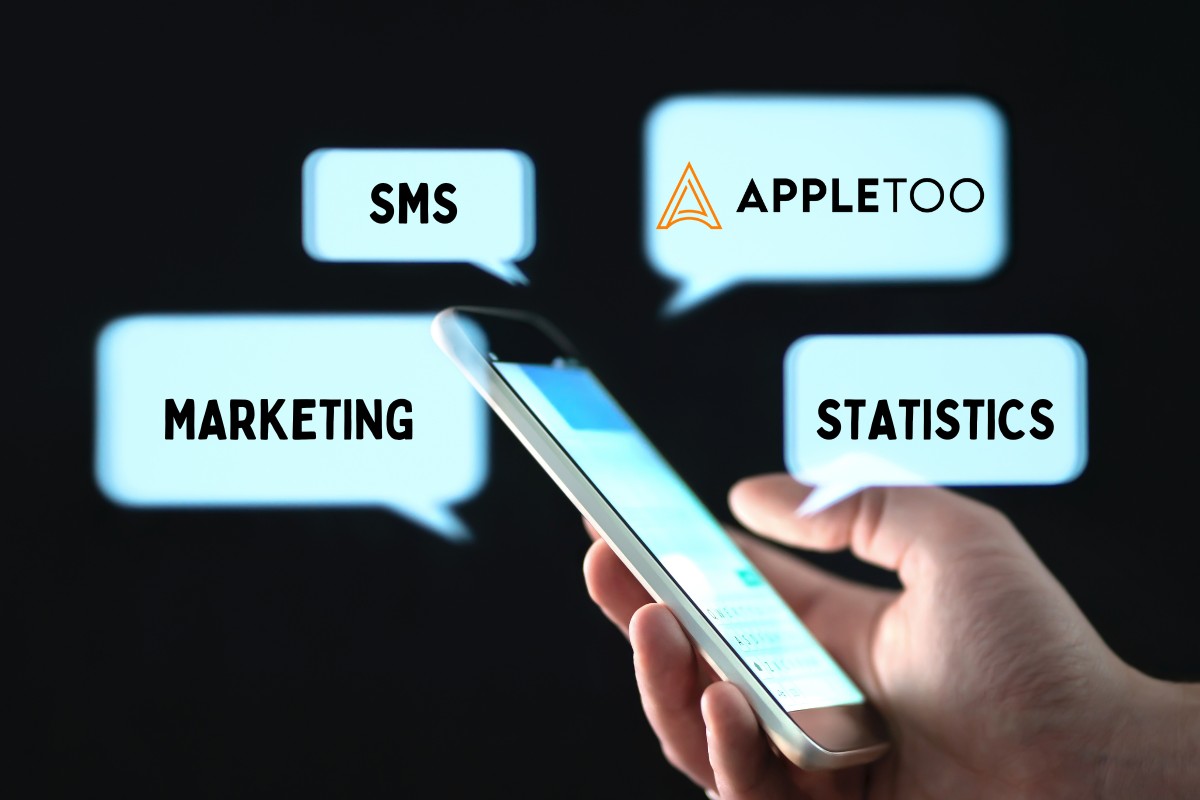We live in a fast-paced world where businesses always seek innovative, more effective ways to engage with customers.
SMS marketing is one of those ways, with its unparalleled open and response rates, that have emerged as a dynamic and robust tool for building solid customer connections and driving results.
In this article, we will be look into some compelling SMS marketing statistics that underscore the efficacy of SMS marketing.
We will also highlight its ability to get past the clutter to connect with customers at a personal level.
Table of Contents
ToggleKey Statistics
- SMS open rates can be as high as 98% according to statistics.
- Businesses that use SMS texting are more apt to be successful than those that don’t use text.
- The global spending in SMS marketing is set to grow to $339 billion by 2023.
- 97% of the adult American population owns a mobile phone.
- 83.72% of the global population owns a smartphone.
- 91% of customers say they would opt in to get text messages from their favorite brands.
- The market value of SMS marketing is predicted to reach $12.6 billion by 2025.
- More than 60% of mobile phone users read their messages within five minutes of receipt.
- SMS is a customer preferred way to get brand updates according to 48% of respondents.
- By 2025, it’s expected that SMS marketing will reach around 7.5 billion people.
SMS Marketing Statistics
1. SMS open rates can be as high as 98%.

Data shows that SMS marketing outperforms email marketing in terms of open rates.
Email marketing has an average open rate of around 15.68% while SMS marketing has open rates as high as 98%.
Email marketing may be one of the main methods among brands for communication, but SMS offers so many more opportunities to engage with customers.
(The Media Captain)
2. Businesses that use SMS texting are more apt to be successful than those that don’t use text.
Businesses that engage in SMS text messaging customers are 217.33% more apt to be successful than businesses that don’t use SMS marketing.
This tells us that SMS marketing is effective.
If you’re a business owner that’s not using text message marketing, you are missing out on many great opportunities to enhance your customer satisfaction rates.
(SimpleTexting)
3. The global spending in SMS marketing is set to grow to $339 billion by 2023.
Worldwide, the SMS marketing spend is expected to rise to $339 billion (USD).
In 2022, this figure accounted for $327.1 billion (USD) and by 2024, it’s expected to double the 2023 figure of $339 billion (USD).
Moreover, the United States is the biggest market in this industry.
(Luisa Zhou)
4. 97% of the adult American population owns a mobile phone.
Most (97%) of the United States’ population owns a mobile phone of some kind.
Of this 97%, 85% own smartphones.
So, if you’re not using SMS marketing, you are missing out on your own untapped potential.
You could be using text messages to tell your customers all about new products, promotions, and events.
(SMS Comparison)
5. 83.72% of the global population owns a smartphone.

The vast majority of people in the world owns a smartphone.
Statistics reveal that 83.72% of the global population has a smartphone.
That doesn’t include those who own mobile phones without smart features.
All mobile phones today can send and receive text messages.
It’s becoming harder to be successful in business if you’re not using SMS marketing.
(Textedly)
6. 91% of customers say they would opt in to get text messages from their favorite brands.
A whopping 91% of customers say they would opt in for text messages to stay connected to their favorite brands.
This means that SMS marketing is crucial to brands today.
Most people in a survey said they are willing to sign up for SMS texts from brands.
In fact, over half said they already did sign up to get brand text messages.
(99Firms)
7. The market value of SMS marketing is predicted to reach $12.6 billion by 2025.
In just a few short years, the SMS marketing industry is set to reach $12.6 billion (USD) by 2025.
Moreover, this industry is expected to experience a CAGR of 20.3% over the forecast period (2019-2025).
One of the driving factors for SMS marketing growth is the benefit of reducing paper costs.
Also, faster and more convenient customer outreach is needed in today’s world.
(TechReport)
8. More than 60% of mobile phone users read their messages within five minutes of receipt.
More data reveals that 60% of people with phones read their text messages within one to five minutes after they receive them.
This is a statistic that reminds us of how effective SMS marketing is and how well it’s received by mobile phone and smartphone users alike.
(SMSGlobal)
9. SMS is a customer preferred way to get brand updates according to 48% of respondents.
Respondents in a survey related to brands and customer communications, 48% said they prefer to receive text messages for updates.
Let’s compare that to email, which was chosen by 22% of respondents and app notifications 20%.
Direct mail was very last at 8% of respondents.
What does this say about SMS marketing?
(FinancesOnline)
10. By 2025, it’s expected that SMS marketing will reach around 7.5 billion people.

Statistics have revealed that by 2025, there will be 7.25 billion mobile users that SMS marketers can reach.
This data is significant for brands, businesses and marketers.
Imagine the possibilities among 7.5 billion mobiles users in just another year or two.
(SMSCountry)
11. Around 61% of marketers aren’t using SMS marketing.
With what we have learned so far about SMS marketing and mobile phone consumer behavior, it’s surprising to find that 61% of marketers still aren’t using SMS marketing.
Moreover, only 13% of small and medium sized businesses use SMS marketing to inform their customers of events, special sales, etc.
(The Media Captain)
12. 45% of mobile users reply to a text message within 5 to 10 minutes, 20.9% respond to emails in that time.
Response time is one of the most important factors in marketing.
SMS marketing has the quickest response time at 45% responding within 5 to 10 minutes.
Email recipients that respond within 5 to 10 minutes account only for 20.9%.
The vast majority of email recipients reply within a few hours (32.7%).
(SimpleTexting)
13. 35% of brands have implemented some kind of SMS marketing strategy.
Even with everything we know already, only 35% of brands have implemented some form of SMS marketing strategy, according to the stats.
This means that a much larger percentage (65%) have no official strategy for SMS marketing.
If you’re a marketer, do you have a set SMS marketing strategy in place?
(Luisa Zhou)
14. Americans say they check their phones 96 times a day on average.
When you put together the data about how nearly half of mobile phone users prefer for businesses and brands to contact them via text messaging and how people check their phones on average 96 times a day, you have an equation for success if you take the opportunity in front of you.
(SMS Comparison)
15. The CTR for SMS messages is 9.18%.
Here’s some data you can’t ignore as a marketer.
The click-through-rate (CTR) for SMS messages is 9.18%, which is significant.
If you’re a brand or marketer, you know just how significant this CTR is for successful marketing of any kind.
(Textedly)
16. 90% of cellphone users check their phone within 30 minutes after awakening.

Most people check their phones soon after they wake up every day.
In fact, 90% admit to checking their phones within half an hour after waking up.
Another bit of data revealed that 32% check out their phones immediately after waking.
This is all vital data for marketers, brands, and businesses.
(99Firms)
17. 19% of text message ads are clicked.
If you’re using SMS advertising for marketing, you need to know that 19% of text ads are clicked.
This correlates with the 98% open rate, 45% response rate, and the consumer preference for receiving text messages for brand communications.
It’s also important to know that these rates differ across industries and niches.
Some perform better than others.
(TechReport)
18. 47% of marketers think that the most effective industry for SMS marketing is retail.
Research shows that 47% of marketers feel that retail is the best industry for SMS marketing because it’s more effective in this industry.
If you’re a retail marketer, you need to know this because the competition in this industry is more intense.
(FinancesOnline)
19. 80% of consumers who use coupons opt-in to get them via text message.
This statistic tells us that most coupon consumers choose to get coupons via text message, which is even more popular than discount sites like Bountii.
So, if you’re brand or business offers coupons and discounts, SMS marketing could boost your customer satisfaction and word of mouth advertising.
(SMSGlobal)
20. American adults aged 18 to 24 text and average of 128 times per day.

This is where we discuss some age-related demographics.
American adults aged 18 to 24 account for the most texts per day at 128 on average.
The adult age range between 25 and 34 text 75 times per day on average and those between 45 and 54 send 33 texts per day on average.
Therefore, almost every targeted age group uses text.
(SMSCountry)
FAQs
What are the benefits of SMS marketing?
After doing some digging, we found these benefits of SMS marketing:
1. SMS messages offer high open rates of 98% compared to email open rates of 15%.
2. Response rates for SMS messages are also high at 9.18% compared to 2.5 for emails.
3. You can personalize SMS messages to each recipient which increases message efficacy.
4. SMS marketing campaigns are easier to track and measure so you can tell what’s working and what isn’t.
What are the challenges of SMS marketing?
SMS marketing isn’t without its challenges, so we have a couple of those for you:
1. Deliverability issues due to a bad number or spam filters
2. Segmentation which is essentially programming or coding
How can you get started with SMS marketing?
Before you can engage in SMS marketing, you need an SMS marketing platform.
There are several from which to choose out there, so choose the one that suits your budget and business needs.
After you select your SMS marketing platform, you need to create a list of contacts to send your marketing messages.
These contacts come from your website, social media, or in-store signups.
What are some SMS marketing best practices?
To engage in SMS marketing, you need to use best marketing practices which includes the following:
1. Get the permission of potential recipients before you start sending SMS marketing messages. Use an SMS opt-in form on your app or website to get permission.
2. Keep your SMS texts short and succinct. Getting right to the point in a text is how you get the read. Also, people are more apt to respond to a message that gets straight to the point.
3. Personalize your messages so they are relevant to your recipients. You can use their name, location, or something from a previous purchase.
4. Create a clear and concise call to action. This explains what you want the recipient to do like signing up for an event. visiting your site or making a purchase.
5. Monitor and track your results. This means tracking your SMS marketing campaigns, so you know what is and isn’t working. This way, you can make improvements over time.
How much does it cost to use SMS marketing?
The costs incurred by SMS marketing will depend on the platform you use and how many messages you send.
That said, SMS marketing is usually a very affordable marketing option.
What are the measurements for successful SMS marketing?
There are several ways to measure the success of SMS marketing campaigns that include:
1. Text open rate: This relates to the percentage of recipients who open your messages.
2. Response rate: This is the percentage of recipients who take action after reading your SMS messages like clicking a link or visiting your site.
3. Click-through-rate: The percentage of potential customer recipients who click on a link sent via text message.
4. Conversion rate: Conversions relate to the percentage of SMS, email, and other marketing text recipients who take the intended action after opening and reading the SMS message like signing up for an event or making a purchase.
Conclusion
Now that you can see how effective SMS marketing can be, you may want to consider making some changes in your marketing strategy.
You shouldn’t want to be part of the over 60% of brands that don’t use this method of customer communication.
We hope these SMS marketing statistics have given you plenty to consider and use for your marketing.
Next, read the FAQs to learn even more about SMS marketing and get some tips.
Sources
| The Media Captain | SimpleTexting | Luisa Zhou |
| Textedly | 99Firms | TechReport |
| FinancesOnline | SMSCountry | SMSGlobal |
| SMS Comparison | EarthWeb | The Small Business Blog |











